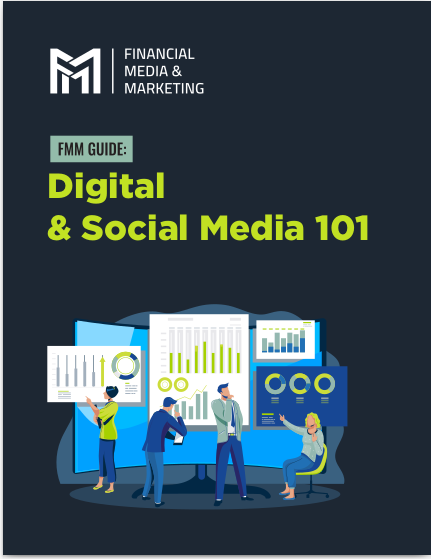Key Takeaways
- Personalizing newsletters can significantly enhance client engagement and retention.
- Utilizing data and client feedback allows for more tailored and relevant content, increasing the reach and impact of newsletters.
Personalization in Financial Advisor Newsletters: Tips for Increasing Client Reach
In the financial advisory sector, staying connected with clients and keeping them engaged is crucial for maintaining strong relationships and fostering trust. One effective way to achieve this is through personalized newsletters. Personalization not only captures clients’ attention but also ensures that the content is relevant and valuable to them. Here are some tips to help financial advisors personalize their newsletters and increase their client reach.
Understanding the Importance of Personalization
Enhancing Client Engagement
Personalized content resonates more with clients, making them feel valued and understood. When clients receive newsletters that address their specific interests and financial goals, they are more likely to engage with the content. This increased engagement can lead to higher open rates, click-through rates, and overall satisfaction with your services.
Building Stronger Relationships
Personalized communication plays a significant role in building trust and loyalty. By demonstrating that you understand and care about your clients’ unique needs, you can foster stronger relationships. Simple personalized elements, such as addressing clients by name or referencing previous interactions, can make a big difference in how your clients perceive your communications.
For example, if a client has expressed interest in retirement planning, sending them a newsletter focused on retirement strategies shows that you remember their preferences and are committed to helping them achieve their goals. This level of attention to detail helps build a deeper connection and encourages clients to stay engaged with your services.
Gathering and Utilizing Client Data
Collecting Relevant Client Information
To personalize your newsletters effectively, you need to gather relevant information about your clients. This can be done through various methods such as surveys, consultations, and direct interactions. Key data points to collect include financial goals, investment preferences, life events, and interests.
During client consultations, take detailed notes and record important information that can be used to tailor your newsletters. Online surveys can also be an effective way to gather data, especially if they are designed to be quick and easy for clients to complete. The more detailed and accurate the information you collect, the better you can personalize your content.
Segmenting Your Audience
Once you have collected sufficient data, the next step is to segment your audience. Segmenting involves dividing your client base into smaller groups based on shared characteristics or interests. This allows you to create targeted content for each group, making your newsletters more relevant and engaging.
For example, you might segment your audience based on factors such as age, income level, or financial goals. Clients nearing retirement may appreciate content on retirement planning and estate management, while younger clients might be more interested in topics like saving for a home or investing in stocks.
Leveraging CRM Tools
Customer Relationship Management (CRM) tools can be invaluable in managing and analyzing client data. These tools allow you to store and organize client information, track interactions, and automate personalized communication.
Using a CRM, you can set up automated workflows that send personalized newsletters to specific segments of your audience. For instance, when a client reaches a certain milestone, such as turning 50, your CRM can trigger a newsletter with relevant content about retirement planning. This level of automation ensures that your communications are timely and relevant, without requiring constant manual effort.
Crafting Personalized Content
Tailoring Financial Advice
When creating personalized newsletters, it’s essential to tailor your financial advice to address individual client needs and goals. This means going beyond generic financial tips and providing specific, actionable advice that resonates with your clients.
For example, if you know that a client is focused on saving for their children’s education, you can include content about college savings plans, scholarships, and tax benefits related to education expenses. By offering advice that aligns with their priorities, you demonstrate your commitment to helping them achieve their financial goals.
Using Client Names and Personal Touches
Including personal touches in your newsletters can significantly enhance their impact. Addressing clients by name in the greeting is a simple but effective way to grab their attention and make the communication feel more personal.
Additionally, referencing previous interactions or milestones can further personalize your newsletters. For example, if a client recently purchased a home, you could include content on managing mortgage payments and home insurance. These personal touches show that you are attentive to their unique situation and provide content that is directly relevant to their lives.
Highlighting Relevant Topics
To keep your newsletters engaging, it’s important to cover topics that are pertinent to different client segments. Pay attention to client feedback and interests to identify the topics that matter most to them.
For example, if you notice that many of your clients are interested in sustainable investing, you could create a series of newsletters focused on ESG (Environmental, Social, and Governance) investing strategies. By prioritizing topics that resonate with your audience, you increase the likelihood that they will find your content valuable and relevant.
Measuring the Impact of Personalization
Tracking Engagement Metrics
To evaluate the effectiveness of your personalization efforts, it’s essential to track key engagement metrics. These metrics can include open rates, click-through rates, and conversion rates.
By analyzing these metrics, you can gain insights into how well your personalized newsletters are performing. For example, if you notice that newsletters with personalized subject lines have higher open rates, you can prioritize this strategy in future communications. Tracking engagement metrics allows you to continuously refine and improve your personalization efforts.
Gathering Client Feedback
Client feedback is invaluable for understanding how your newsletters are being received and identifying areas for improvement. Encourage clients to provide feedback on the content and format of your newsletters.
You can gather feedback through surveys, direct emails, or even during client consultations. Ask specific questions about what they like, what they find useful, and what topics they would like to see covered. This feedback can help you make informed decisions about how to enhance your newsletters and better meet your clients’ needs.
Adjusting Strategies Based on Results
Based on the engagement metrics and client feedback, it’s important to adjust your personalization strategies to improve effectiveness. This might involve experimenting with different types of content, changing the frequency of your newsletters, or trying new personalization techniques.
For example, if you find that clients respond well to interactive content, such as quizzes or polls, you might incorporate more of these elements into your newsletters. Continuous improvement is key to maintaining high levels of client engagement and satisfaction.
Best Practices for Continuous Improvement
Staying Updated with Client Preferences
To keep your newsletters relevant and engaging, it’s essential to stay updated with your clients’ preferences and needs. Regularly review and update your client information to ensure that your personalization efforts are based on accurate and current data.
Consider conducting periodic surveys or check-ins to gather updated information about your clients’ goals and interests. This proactive approach helps you stay in tune with their changing needs and ensures that your newsletters continue to provide value.
Experimenting with New Personalization Techniques
Don’t be afraid to experiment with new personalization techniques to keep your newsletters fresh and engaging. Try incorporating different types of content, such as videos, infographics, or interactive elements.
For example, you might create personalized video messages for high-value clients or use dynamic content blocks that change based on the recipient’s profile. By experimenting with new approaches, you can discover what resonates most with your audience and continually enhance your personalization efforts.
Ensuring Privacy and Data Security
Maintaining client trust is paramount, especially when dealing with personal and financial information. Ensure that your data handling practices comply with privacy regulations and that client information is kept secure.
Implement robust security measures to protect client data and be transparent about how you collect, use, and store information. By prioritizing privacy and data security, you can build and maintain client trust, which is essential for long-term success.
Wrapping It Up
Personalization in financial advisor newsletters is a powerful tool for increasing client reach and engagement. By understanding your clients’ needs, utilizing data effectively, and continuously refining your strategies, you can create newsletters that resonate with your audience and strengthen your client relationships. Implement these tips to enhance your newsletters and watch your client reach grow.
Contact Information:
Email: [email protected]
Phone: 8777993433
Bio:
Stan Collins is a Marketing Specialist based in Arizona that focuses primarily on online branding and digital marketing. In addition to helping financial professionals, real estate agents, and other business professionals generate leads and perfect their online identities, Stan Collins also writes educational content about marketing.










